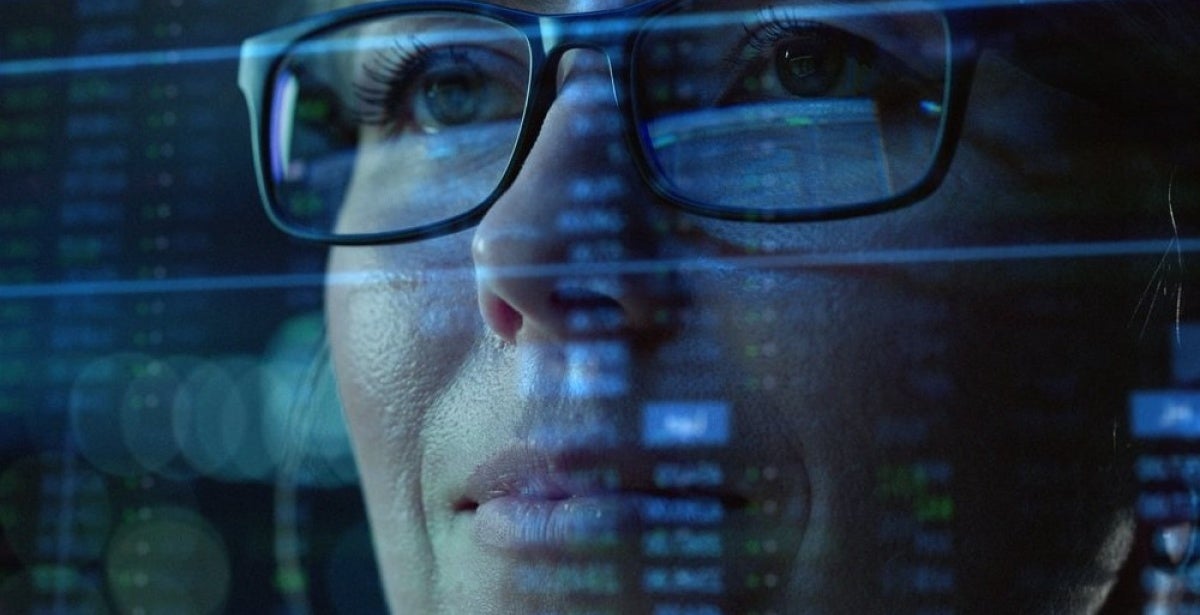What is digital forensics in cyber security?

In a world driven by data and digital infrastructure, safeguarding information systems is a critical priority for individuals, organisations and governments alike.
According to the Australian Government’s Annual Cyber Threat Report, cyber crimes are reported once every six minutes in Australia and are estimated to cost USD $9.5 trillion (AUD $14.6 trillion) globally in 2024.
Cyber threats are also escalating in complexity, and the ability to investigate and respond to incidents is a core component of modern cyber security. This is where digital forensics comes into play – a specialised field that aims to uncover, analyse and respond to cybercrimes with precision.
But what exactly is digital forensics, and how can you forge a cyber security career in this high-stakes, highly impactful field?
In this guide, we’ll explore digital forensics' pivotal role in cyber security, the career pathways it opens, and how postgraduate students and current cyber security professionals can seize these opportunities.
What is digital forensics?
Digital forensics is the science of investigating digital devices, systems and networks to uncover evidence of cyber incidents or crimes. Often an underrepresented area of cyber security, it bridges both technology and legal frameworks, providing intel and strategies that help organisations and law enforcement tackle cyber threats effectively.
Whether such threats involve data breaches, unauthorised network access or large-scale cybercrime, digital forensics provides a structured process for investigating incidents, ensuring accountability and preventing future threats.
The process of digital forensics is methodical, ensuring that evidence is collected, preserved and presented in a way that meets both technical and legal standards. Each stage plays a vital role in piecing together the puzzle of a cyber incident, including:
- Identification: Pinpointing relevant data sources such as computers, networks, or cloud systems. These could include computer hard drives, email servers, mobile devices, network logs, cloud storage systems or Internet of Things (IoT) devices.
- Preservation: Securing and maintaining the integrity of digital evidence. Forensic experts create exact replicas (or images) of data to work on, preserving the original evidence in its untouched state.
- Analysis: The heart of the forensic process, analysis, involves examining the evidence to uncover insights. Experts sift through vast amounts of data to identify breach points, malware signatures or patterns of unauthorised activity. Advanced tools and techniques, such as metadata analysis and reverse engineering, are often employed to reconstruct events with precision.
- Documentation: Every action taken during the investigation is meticulously recorded. This documentation includes details of how evidence was collected, tools and methods used, and the findings. Clear and thorough documentation ensures the credibility of the investigation and serves as a reference for legal proceedings or stakeholder communication that may be integral to the case.
- Presentation: The final stage focuses on translating complex forensic findings into clear, actionable insights. Whether delivered in a court of law, to corporate leadership, or to law enforcement, the presentation must be comprehensible to non-technical audiences. Forensic experts may use visual aids such as timelines or flowcharts to make their case digestible and compelling.
What is the role of digital forensics in cyber security?
With cybercrime costing Australia a reported $33 billion annually, the role of digital forensics has never been more critical – not just as a reactive tool, but as a proactive strategy.
Underpinning both immediate incident response and the development of long-term cyber resilience, digital forensics is particularly pivotal when it comes to:
Identifying the source of attacks
By meticulously analysing digital footprints – such as IP addresses, metadata and malware signatures – forensic experts can reconstruct the sequence of events leading to a breach. This capability not only helps organisations understand how they were targeted but also provides actionable intelligence to prevent future attacks.
Understanding breach impacts
In the critical aftermath of a cyber incident or hacking, every second counts. Digital forensics enables swift assessment of breach impacts, identifying what data or systems were compromised and how. This rapid response limits the extent of the damage, safeguards unaffected assets and informs recovery plans to help optimise business continuity.
Supporting law enforcement or corporate investigations
Forensic evidence is often the linchpin in legal cases against cybercriminals.
From recovering deleted files to proving the intent behind malicious activities, digital forensics equips law enforcement with robust, admissible evidence. Bridging the gap between technology and the legal system helps to ensure perpetrators are held accountable, deterring future attacks.
What are the key areas of digital forensics?
Digital forensics is a multidisciplinary field, with each area focusing on specific facets of the cyber security ecosystem. Collectively, these areas provide comprehensive capabilities for investigating cyber incidents, uncovering evidence and strengthening organisational defences.
Here’s a closer look at the key areas of digital forensics:
Computer forensics
Computer forensics involves the recovery and analysis of data from computers, laptops, and storage devices such as hard drives and USBs. It’s essential when it comes to recovering data, uncovering malware, or investigating unauthorised access to sensitive systems.
For businesses, it can determine how internal systems were compromised and what data was accessed.
For individuals, it can help recover data from damaged devices and support legal cases involving the misuse of personal computers. Often intersecting with malware analysis and ransomware investigations, computer forensics is critical for both corporate and personal security.
Network forensics
This area focuses on monitoring and analysing network traffic to identify abnormalities, unauthorised access, or malicious traffic. Specialists in this field often use packet captures and logs to trace data movement, pinpoint the source of intrusions and understand the scope of a network-based attack.
Network forensics is particularly vital in countering large-scale incidents, like distributed denial-of-service (DDoS) attacks, in which overwhelming traffic is used to disable a service.
Mobile forensics
Mobile forensics specialises in extracting and analysing data from smartphones, tablets, and other mobile devices, which often contain sensitive personal and corporate information such as encrypted messages, call logs, GPS activity and app activity.
This area is indispensable in legal investigations involving harassment, fraud or social media misuse. For organisations, mobile forensics can help identify whether company-owned devices were compromised or misused, making it critical for managing the security of remote workforces and bring-your-own-device (BYOD) policies.
Cloud forensics
As businesses increasingly migrate to cloud solutions like Amazon Web Services (AWS) or Google Cloud, this domain becomes more integral to modern investigations.
Cloud forensics addresses the complexities of investigating evidence stored across decentralised cloud infrastructures, navigating challenges like jurisdictional issues, transient data (such as temporary storage) and multi-tenancy, where multiple clients share the same physical infrastructure.
Effective cloud forensics involves working closely with cloud providers to retrieve logs, snapshots and other critical evidence – all while ensuring compliance with regional data privacy laws.
Forensic data analysis
Forensic data analysis involves uncovering patterns, abnormalities, or fraudulent activities within large datasets. Professionals in this field use advanced tools like machine learning and data mining to detect trends that may indicate insider threats, financial fraud, or coordinated attacks.
This area is especially valuable in industries like finance and healthcare, where massive volumes of sensitive data must be monitored for irregularities. Forensic data analysis also supports predictive security measures by identifying potential vulnerabilities before they are exploited.
Career paths in digital forensics
Qualifications in digital forensics open the door to a number of high-impact, in-demand and well-compensated career paths spanning law enforcement to finance, healthcare and technology.
If you’re wondering how much digital forensics earn, salaries can range from approximately $70,000 - $190,000 and beyond in Australia, depending on the role, location and level of experience required.
While each position caters to different interests and areas of expertise, professionals embarking on a career in digital forensics need a strong blend of technical expertise, analytical skills and legal knowledge to excel.
A common question among those entering the field is whether digital forensics requires coding. While not all roles demand advanced programming skills, foundational coding knowledge can be highly advantageous, especially in roles involving malware analysis, reverse engineering, or creating automatic tools for forensic investigations.
Here are some of the key career paths in digital forensics:
Digital forensic analyst
- Responsibilities: The role investigates and interprets digital evidence for use in legal or corporate contexts. Analysts often work on cases involving fraud, intellectual property theft, or data breaches, recovering data and tracing the origins of incidents.
- Salary: Digital forensic analyst jobs are advertised for approximately $80,000 - $130,000 on Seek.com. According to Indeed.com, the average base salary is currently $100,240 per year.
Cybercrime investigator
- Responsibilities: This role collaborates with law enforcement agencies to uncover and address criminal activities in cyberspace. Investigators focus on cases like ransomware attacks, identity theft and hacking incidents – often requiring a deep understanding of digital evidence and investigative processes.
- Salary: Indeed.com reports cyber crime investigator salaries in Australia have an average salary of $111,623 per year.
Incident response specialist
- Responsibilities: This role responds to and manages cyber incidents, contains threats, investigates breaches and guides organisations in restoring operations securely.
- Salary: According to Talent.com, the average incident response specialist salary in Australia is $126,500 per year with a range from $79,300 - $166,700.
Forensic consultant
- Responsibilities: This role advises organisations on digital forensic strategies, assists in incident investigations and develops frameworks to enhance cyber resilience. Forensic consultants can work for agencies, in-house or for themselves.
- Salary: Salaries for this position can vary significantly but typically range from $176,900 - $180,800 according to Jooble.org.
Getting started in digital forensics
Your pathway to a profession in digital forensics depends on where you’re starting from. For those new to the working world with no educational or formal experience, a Bachelor of Cyber Security provides the foundation for a thriving career.
For experienced professionals aiming to deepen their expertise or step into leadership roles – or those with an undergraduate degree in a related field who want to specialise in fighting cybercrime – a comprehensive postgraduate qualification like the University of New South Wales (UNSW) Online Master of Cyber Security is the ideal next step.
With specialisations like Security Management and Leadership or Security Engineering, the future-focused program is tailored to working professionals who want to make a mark in the rapidly changing world of tech.
Your path to success in digital forensics with UNSW
Cybercrime is on the rise and the skills and expertise of cyber security professionals are in high demand.
If you want a career that can profoundly impact individuals, organisations, communities and entire countries, a career in digital forensics might be for you.
UNSW Online’s Master of Cyber Security has been designed with industry experts to equip graduates with the advanced expertise needed to future-proof their careers. You’ll gain immediately applicable advanced knowledge and technical skills for a changing global environment, studying 100% online with flexible study options.
Ranked in the top 20 of universities worldwide, UNSW is recognised as having the most employable students by the Australian Financial Review (AFR) Top 100 Future Leader Awards.
If you want to gain a qualification from an industry-leading institution, find out more about the UNSW Online Master of Cyber Security. Reach out to our Enrolment Advisors to learn how you can kickstart an exciting career in this booming field.









